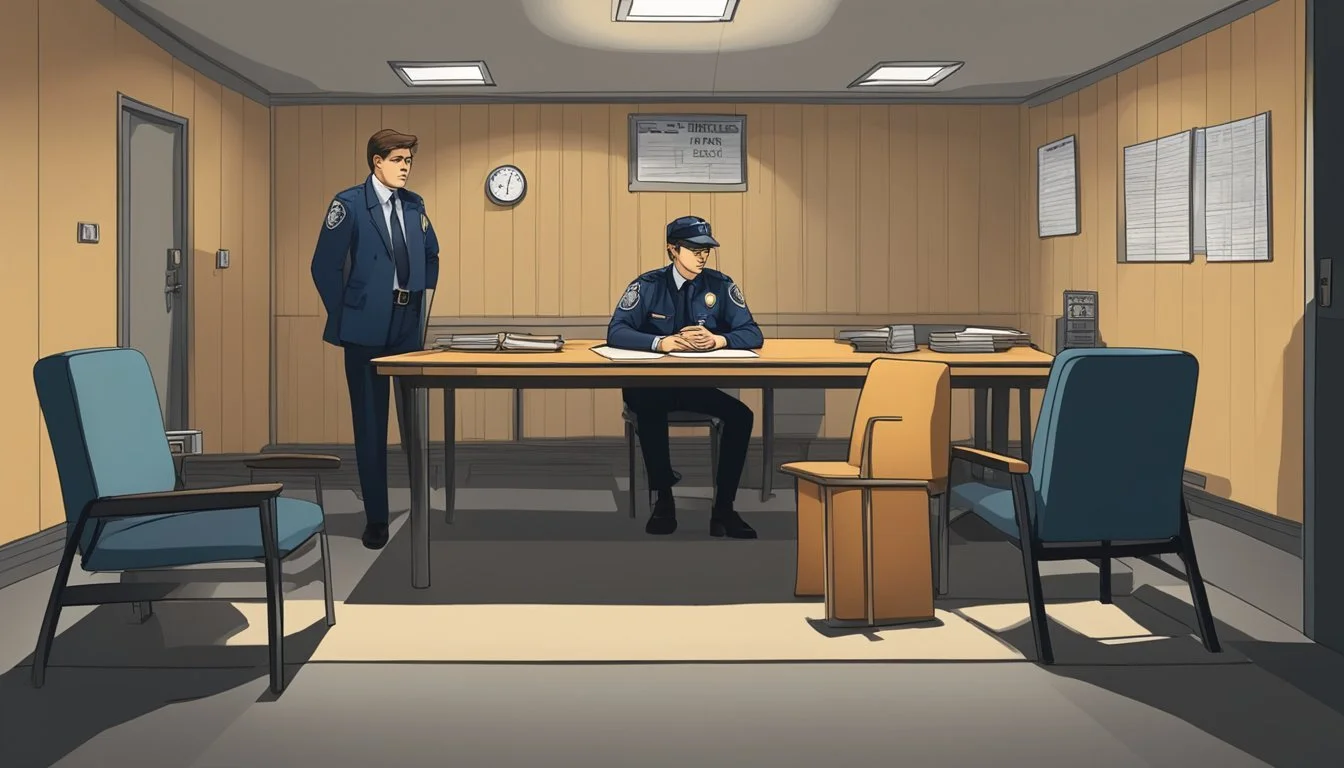Des: Unmasking the Real Dennis Nilsen
A Deep Dive into Britain's Infamous Murderer
Dennis Nilsen, one of Britain's most infamous serial killers, terrorized London in the late 1970s and early 1980s. His chilling crimes shocked the nation and left a lasting impact on criminal history. Nilsen murdered at least 12 young men over a five-year period, luring vulnerable victims to his home before strangling and dismembering them.
The ITV drama series "Des" brought renewed attention to Nilsen's horrific acts. Starring David Tennant in a haunting portrayal of the killer, the show offered a glimpse into the mind of a man who committed unspeakable atrocities. It sparked public interest in the real story behind the dramatization.
A documentary titled "The Real 'Des': The Dennis Nilsen Story" provides an in-depth look at the case through exclusive interviews with those involved. This factual account aims to separate truth from fiction, offering insights into Nilsen's motivations and the investigation that ultimately brought him to justice. By examining the real events, viewers can better understand the complex factors that led to these tragic crimes.
Dennis Nilsen's Early Life and Background
Dennis Andrew Nilsen was born on November 23, 1945, in Fraserburgh, Scotland. His early years were marked by family challenges and a strict upbringing, which shaped his personality and future actions.
Family and Childhood
Nilsen grew up in a working-class family in Fraserburgh, a fishing town in Aberdeenshire. His parents, Elizabeth Whyte and Olav Moksheim, had a tumultuous relationship. Nilsen's father left when he was young, leaving his mother to raise him and his siblings.
As a child, Nilsen was quiet and introverted. He struggled with his sexuality and felt isolated from his peers. The death of his grandfather, whom he was close to, deeply affected him at a young age.
Nilsen's childhood experiences, including feelings of abandonment and confusion about his identity, likely contributed to his later psychological issues.
Military Service and Early Career
At 16, Nilsen enlisted in the Army Catering Corps, seeking structure and escape from his troubled home life. He served for 11 years, including a stint in Aden (now Yemen). During his military service, Nilsen honed his cooking skills and developed a disciplined lifestyle.
After leaving the army in 1972, Nilsen briefly joined the police force. He later worked as a civil servant in London job centers. These positions allowed him to maintain an outward appearance of normalcy while concealing his inner turmoil.
Nilsen's time in the military and subsequent careers provided him with the skills and facade of respectability that would later enable him to carry out his crimes undetected for years.
The Horrific Crimes
Dennis Nilsen's murderous spree shocked Britain, claiming at least 12 victims between 1978 and 1983. His crimes targeted vulnerable young men, primarily in London.
Initial Murders and Methodology
Nilsen's killing began in late 1978. He lured homeless or vulnerable young men to his home in Melrose Avenue, North London. Nilsen strangled his victims, often after drinking alcohol with them. He kept the bodies for extended periods, engaging in disturbing acts of necrophilia.
Nilsen's methods evolved over time. He dismembered bodies to dispose of them more easily. He flushed some remains down the toilet and burned others in his garden. Nilsen later moved to Cranley Gardens, where he continued his gruesome activities.
Discovery of Crimes
Nilsen's crimes came to light in February 1983. Tenants at Cranley Gardens complained of blocked drains. A plumber discovered human flesh and bones in the pipes. Police were alerted and quickly identified Nilsen as the suspect.
Upon arrest, Nilsen calmly confessed to killing "15 or 16" people. A search of his home revealed human remains hidden in closets and under floorboards. Investigators also found evidence at his previous Melrose Avenue address. The extent of Nilsen's crimes shocked even seasoned detectives.
Investigation and Arrest
The investigation into Dennis Nilsen's crimes began in February 1983 after human remains were discovered in a blocked drain. This led to a swift police response, Nilsen's arrest, and a detailed forensic investigation that uncovered the full extent of his heinous acts.
The Role of the Police
Detective Chief Inspector Peter Jay led the investigation into Nilsen's crimes. On February 9, 1983, Jay received a call about human remains found in a drain at 23 Cranley Gardens, North London. He quickly assembled a team to investigate the property.
Upon arrival, the police noticed a foul odor emanating from Nilsen's flat. Jay questioned Nilsen, who calmly admitted to killing "15 or 16" people. This shocking confession prompted the officers to arrest Nilsen immediately.
Arrest at Muswell Hill
Nilsen was arrested at his Muswell Hill flat without resistance. He appeared eerily calm and even offered to make tea for the officers. During initial questioning, Nilsen provided detailed accounts of his crimes, leaving the investigators stunned.
The police secured the crime scene and began a thorough search of the premises. They discovered body parts hidden in various locations throughout the flat, including under the floorboards and in kitchen cupboards.
Evidence and Forensic Investigation
Forensic teams meticulously combed through Nilsen's flat, collecting evidence. They found human remains, personal belongings of victims, and tools used in the dismemberment process. The bathroom proved to be a key area, where Nilsen had performed many of his gruesome acts.
Investigators also searched Nilsen's previous address at Melrose Avenue, where they uncovered more evidence of his crimes. The forensic investigation provided crucial physical evidence to support Nilsen's confession.
Police efforts focused on identifying victims, a challenging task due to the state of the remains. They used dental records, personal effects, and witness statements to piece together the identities of Nilsen's victims.
Trial and Incarceration
Dennis Nilsen's trial, conviction, and time in prison marked the final chapter of his horrific crimes. The case drew intense public interest due to the shocking nature and scale of his murders.
Old Bailey Trial
Nilsen's trial began on 24 October 1983 at London's Central Criminal Court, the Old Bailey. He was charged with six counts of murder and two of attempted murder. The prosecution presented evidence of Nilsen's gruesome acts, including his own detailed confessions. His defense team argued diminished responsibility due to mental abnormality.
The trial lasted 11 days and featured testimony from surviving victims, police officers, and forensic experts. Nilsen himself took the stand, calmly recounting his crimes in chilling detail. His demeanor in court was described as detached and emotionless.
Conviction and Sentencing
On 4 November 1983, the jury found Nilsen guilty on all counts after deliberating for just over an hour. The judge, Justice Croom-Johnson, sentenced him to life imprisonment with a recommendation that he serve a minimum of 25 years.
Nilsen's sentence was later changed to a whole-life tariff, meaning he would never be eligible for parole. This decision reflected the severity and number of his crimes, as well as the ongoing danger he posed to society.
The judge described Nilsen as "wicked, dangerous and unpredictable" during sentencing.
Life in Prison and Death
Nilsen spent over three decades in various high-security prisons, including HMP Full Sutton in Yorkshire. He occupied his time writing, drawing, and corresponding with journalists and true crime enthusiasts.
In prison, Nilsen continued to attract attention through interviews and autobiographical writings. He showed little remorse for his crimes, often speaking about them in a matter-of-fact manner.
On 12 May 2018, Nilsen died at HMP Full Sutton at the age of 72. The cause of death was later determined to be a pulmonary embolism. His passing marked the end of one of Britain's most notorious serial killers, leaving behind a legacy of horror and unanswered questions.
Media Representation and Public Fascination
Dennis Nilsen's crimes captured widespread attention, sparking intense media coverage and public interest. His case inspired numerous adaptations across various forms of media, from television dramas to detailed biographical accounts.
Adaptation into Television
ITV's "Des" brought Nilsen's story to life on screen in 2020. The true-crime drama starred David Tennant as the serial killer, earning praise for his chilling portrayal. The series drew millions of viewers, reigniting public fascination with the case. It explored Nilsen's crimes, arrest, and trial, offering insights into his psyche and the investigation process.
The show's success led to a follow-up documentary, "The Real Des: The Dennis Nilsen Story." This program featured interviews with individuals involved in the case, providing additional context to the dramatized events.
Biographies and Books
Brian Masters, a renowned biographer, wrote "Killing for Company" - the definitive account of Nilsen's life and crimes. Published in 1985, the book delved into Nilsen's background, motivations, and the details of his murders. It became a bestseller and remains a key resource on the case.
Several other authors have since penned books about Nilsen, examining different aspects of his crimes and psychology. These works continue to fuel public interest in the case, with some receiving coverage in publications like Radio Times.
The enduring fascination with Nilsen's story demonstrates the lasting impact of his crimes on British culture and the true-crime genre.
Psychological Profile and Motivations
Dennis Nilsen's complex psychological makeup and deeply rooted motivations shed light on his heinous crimes. His actions stemmed from a combination of personality traits, childhood experiences, and inner conflicts.
Nilsen's Mindset and Personality
Nilsen exhibited narcissistic tendencies and an inflated sense of self-importance. He craved attention and control, often manipulating others to fulfill his desires. His lack of empathy allowed him to objectify his victims, viewing them as mere possessions.
Nilsen's loneliness and social isolation played a significant role in his behavior. He struggled to form meaningful connections, leading to a distorted view of relationships.
His military background instilled discipline and meticulous planning, which he later applied to his crimes. Nilsen's intelligence and charm helped him lure victims and evade detection for years.
Theories behind the Killings
Experts propose several theories to explain Nilsen's murderous impulses. One suggests his actions were driven by a deep-seated fear of abandonment, stemming from childhood trauma.
Another theory points to Nilsen's repressed homosexuality and internalized homophobia as potential triggers. His inability to accept his sexuality may have fueled his rage and hatred towards his victims.
Sadistic tendencies likely played a role in Nilsen's crimes. He derived pleasure from exerting power and control over his victims, both alive and dead.
Some psychologists believe Nilsen's necrophilic behaviors were attempts to create permanent companions, reflecting his intense fear of loneliness and rejection.
Impact on Society and Legacy
Dennis Nilsen's crimes profoundly affected British society, law enforcement, and popular culture. His case exposed vulnerabilities in police procedures and sparked public fascination with serial killers.
Influence on Law Enforcement and Forensics
Nilsen's murders led to significant changes in police investigative techniques. The case highlighted the need for improved methods to identify human remains and trace missing persons. Forensic experts developed new approaches to analyzing decomposed bodies and fragmentary remains.
Police began implementing more rigorous protocols for following up on missing person reports, especially for vulnerable individuals. The investigation also emphasized the importance of thorough crime scene analysis and evidence collection.
Cultural Impact and Continued Interest
Nilsen's crimes captivated public attention and influenced media portrayals of serial killers. Numerous books, documentaries, and dramatizations explored his life and motivations. The ITV series "Des" starring David Tennant renewed interest in the case decades later.
His crimes sparked debates about mental health, loneliness, and societal alienation. Nilsen's background as a seemingly ordinary civil servant challenged perceptions of what a serial killer could look like.
The enduring fascination with Nilsen reflects society's ongoing struggle to understand extreme human behavior and the darkest aspects of human nature.




